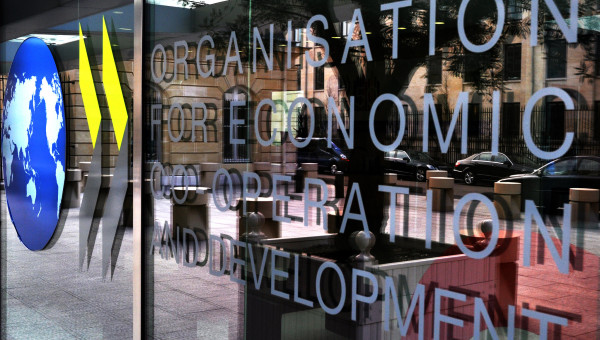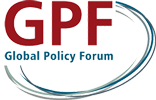News

By Bodo Ellmers
The Organisation for Economic Co-operation and Development (OECD)’s Development Assistance Committee (DAC) is traditionally the key standard-setter and coordination body for official development assistance (ODA) – commonly known as aid. The current situation – where donors are slashing ODA at a record pace and diminishing its effectiveness by using scarce resources to promote national interests – is a challenge for the DAC, whose role includes ensuring accountability vis-à-vis commitments made.
Political declarations on more and better ODA were recently made at the United Nations (UN) Financing for Development Conference in Sevilla. But if there is to be a reversal of the declining trend in ODA, the DAC must play a decisive role. The DAC review provides opportunities to make sure the DAC is fit for purpose in a changing context. A first consultation with civil society organisations (CSOs) took place in Paris on October 13 in Paris during the 2025 DAC-CSO dialogue.
A bleak picture for ODA
The year 2025 might become the worst year ever for ODA. The OECD predicts that total cuts could amount to 17 percent of total ODA volume. A high proportion of these cuts are due to the US, until recently the world’s largest donor in absolute terms, which has essentially folded its largest development assistance agency, the US Agency for International Development (USAID). In the shadow of the USAID collapse, other donors have also been cutting their budgets. Germany is expected to assume the role of the largest bilateral donor in 2026, perhaps already this year, despite substantial cuts in its own core development budget, the Einzelplan 23. Former ODA champions such as the United Kingdom and the Netherlands have also programmed large cuts. Only three of the 33 DAC donors have recently announced they would be scaling up ODA. But the largest (Spain) has failed to deliver due to the government’s inability to find parliamentary approval for a new budget.
On the effectiveness side, it is not looking too good either. There is a general trend in donor countries towards aligning development spending more closely with their national interests, mostly to security or economic interests. This is evident, for instance, in Germany’s new Action Plan for Cooperation with the Business Sector. Development effectiveness principles suggest aligning development cooperation with the partner countries’ priorities in order to promote ownership and deliver on actual needs. A systematic monitoring against development effectiveness indicators has not taken place for several years, likely because there is little appetite by the parties to highlight a bleak picture in high resolution. Anecdotal evidence suggests that fragmentation is on the rise again, donors are still sidelining country systems, and aid tying is even making a comeback.
The political framework for ODA post-Sevilla
Despite the cuts, the international community prominently reaffirmed the famous 0.7 percent target for ODA this summer in the Compromiso de Sevilla, which was the political declaration of the Fourth International Conference on Financing for Development (FfD4). However, the relevant part (paragraph 33) does not establish any clear steps or timetables, so it remains to be seen how the current downward trends will be stopped and ultimately turned around.
On development effectiveness, FfD4 has reaffirmed existing agreements (paragraph 39) in an abridged and non-operationalised way. While some see this part of the Compromiso de Sevilla as a success story, the depth that has characterised the largely DAC-led and DAC-owned agreements – the 2005 Paris Declaration or the 2008 Accra Action Agenda – has been lost along the way. The 2000s, when the Working Party on Aid Effectiveness (WP-EFF) gave birth to this agreement, is now thought of as the “golden age of ODA”.
Pressure has been high, especially from CSOs, to upgrade the UN Development Cooperation Forum (DCF) and enable it to take on additional roles, especially in norm-setting. However, UN Member States failed to reach an agreement on this at the Sevilla Conference. The Compromiso (paragraph 40) only vaguely stated the intention to “revitalise” the DCF, and asked other bodies to report to it, including the DAC on its ongoing review. Even more ambitious proposals, such as a Convention on International Development Cooperation, received only a short mention in a number of country statements.
The DAC review – challenges and opportunities
The DAC review aims to upgrade ODA’s main governance body so it is fit for current challenges. One of these challenges is certainly the ODA aversion by the current US administration. However, other Member States are also seeing a diminishing appetite in their countries for costly multilateral engagements, in particular in the area of development cooperation. Few details have been made public but a high-level meeting in Iceland set out thematic pillars.
DAC governance: This also includes a review of the DAC membership. Currently, the DAC has 33 members, all provider countries of ODA. Options on the table are to expand formal membership to include other provider countries, but also to give a formal role net recipient or partner countries, or even to non-state aid providers such as CSOs or philanthropy. Some DAC bodies are already open to non-members. For example, the Working Party on Aid Effectiveness (WP-EFF, which disbanded in 2011) gave a seat to CSOs during the Golden Age. The Working Party on Statistics (WP-STAT) already includes 52 invitees and partners. Expanding the membership would obviously make the DAC more inclusive and, perhaps, more legitimate and transparent. Experiences with the expansion of other OECD bodies have been mixed, however. The Inclusive Framework on Base Erosion and Profit Shifting (BEPS) has never been seen as providing a level playing field between DAC and non-DAC members. The Global Partnership for Effective Development Cooperation (GPEDC), a multistakeholder-body that succeeded the WP-EFF, has not been very effective at holding the parties to account against development effectiveness commitments made.
Eligibility and graduation: Being on the DAC list of ODA recipients is a key factor when it comes to determining a country’s access to concessional finance. The DAC has traditionally focused on income when it comes to determining ODA eligibility; countries defined as low- and middle-income by the World Bank are eligible. There is pressure to consider vulnerability criteria in determining eligibility, beyond Gross Domestic Product (GDP), which could be done according to criteria used by the new Multidimensional Vulnerability Index. Positions here are mixed. While there are obvious merits in providing access to concessional finance to countries affected by, for example, climate change or conflicts, this would necessarily reduce the amount available for countries that are poor, and even more so in times of dwindling ODA budgets.
Catalytic role of ODA: There is also pressure to put more emphasis on the catalytic role of ODA, i.e. its potential to mobilise domestic resources in partner countries, especially private investments. Some DAC Member States (and especially the DAC chair) emphasise that ODA is not enough to fill the huge financing gap for achieving the Sustainable Development Goals (SDGs), even if all donors meet their commitments. Hence, it should focus on mobilising other resources. In practice, however, past attempts to catalyse private finance have not been very convincing. The whole agenda had serious side-effects, as limited attention was paid to the cost of capital. The mobilisation of excessively costly financing has driven many partner countries to the brink of debt sustainability limits, and in some cases, straight into debt crises. Moreover, the fact that the DAC communicated time and again that “ODA is not enough” has caused serious reputational damage to the aid regime as the public started questioning its relevance.
It is true that ODA is not enough on its own. However, it is easier to garner support for ODA when it is presented as a solution – highlighting its successes and the tangible outcomes ODA can achieve, as the DAC and others successfully did during the Golden Age of aid. The current DAC review presents a golden opportunity to reassess and change course.
ODA is a comeback kid – but will the DAC be the enabler?
ODA declines are not unprecedented. For example, ODA fell sharply between 1992 and 1997, when the volume shrank by almost a quarter. Coordinated efforts got it back on track: ODA champions among the DAC members were supported by the UN system, which presented the UN Millennium Development Goals as a tangible results framework from the year 2000 onwards, and promoted ODA as part of the Global Partnership for Development (MDG8).
Massive civil society campaigning through the Global Call for Action against Poverty and national campaigns such as Make Poverty History in the UK and Deine Stimme Gegen Armut in Germany created a conducive political environment for more and better ODA among donor country constituencies. In the 15 years that followed, the volume of ODA provided by the DAC Member States more than tripled, from a low point of US$ 70.3 billion in 1997 to a peak of US$ 223 billion in 2023.
This peak was also due to the fact that some wealthier countries responded to the UN’s call to provide more ODA during the COVID-19 crises. This in a moment when there was great need for fiscal resources in recipient countries, as other sources of finance had dried up, and in DAC Member States themselves. This proves that domestic spending needs do not necessarily conflict with transfers to third countries if they are communicated well to both decision-makers and the broader public.
ODA could well see a comeback soon. The question is whether the DAC is ready to play its part. The first progress report of the DAC review will be presented in November 2025. Discussions will also be held at the World Summit on Social Development in Doha in the same month. The workstreams will be further presented at an upcoming conference in Paris in February 2026, under the French G7 presidency. First results will be presented at the UN Financing for Development Forum in April 2026 in New York.
